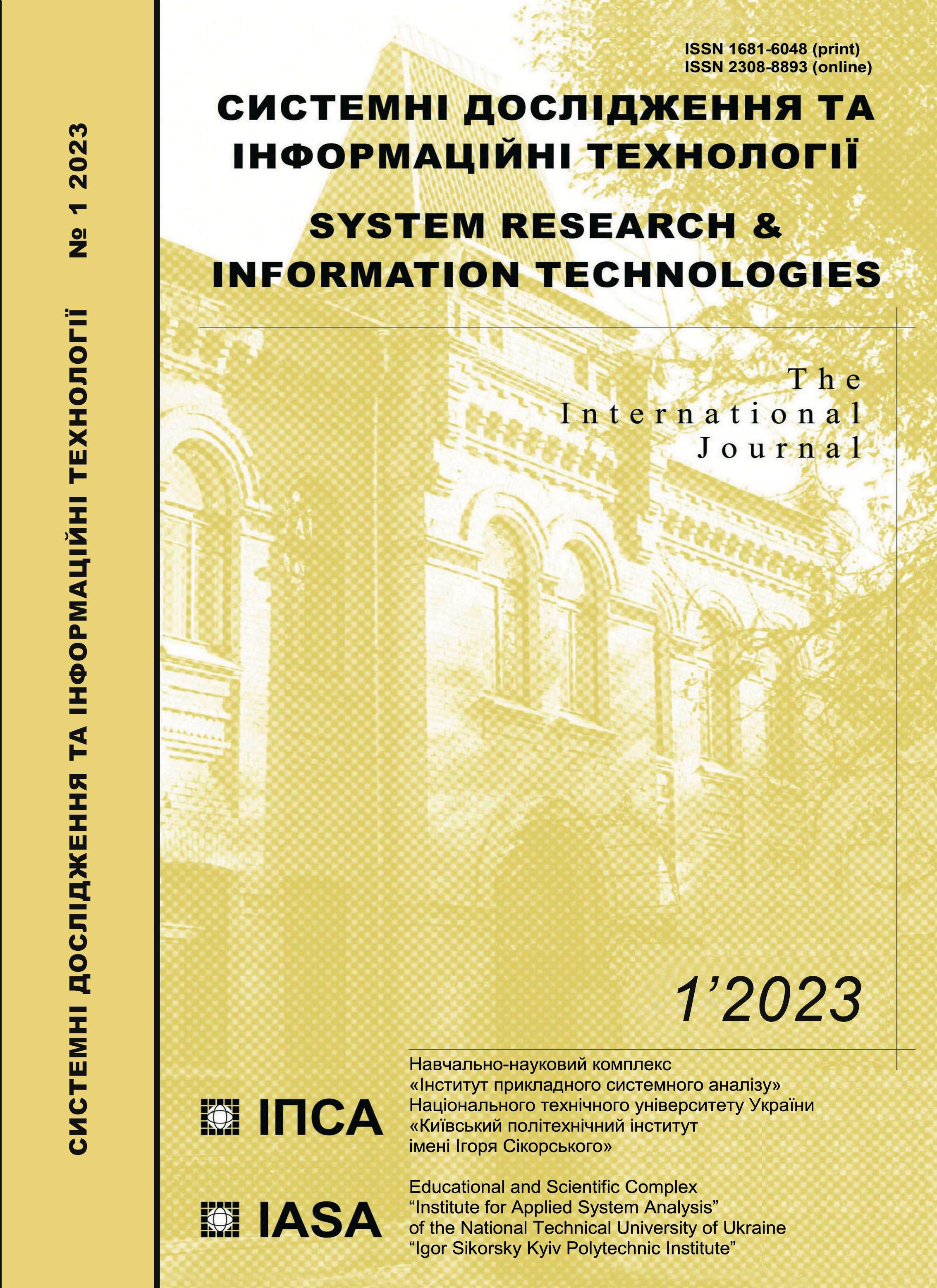A modification of Petri nets with anticipation on a position
DOI:
https://doi.org/10.20535/SRIT.2308-8893.2023.1.08Keywords:
Petri net, anticipation, transition rule, reachability graph, coverability treeAbstract
We propose a modification of Petri nets with strong anticipation on a position. The extension modifies a transition rule by adding a new term that contains an integer function of the new marking in the position. The differences from classic Petri nets are found; for example, the set of markings that are reachable from a current marking by firing the enabled transition can either be empty or contain more than one marking. We consider the construction of a reachability graph and a coverability tree. We give the conditions for the existence of the coverability tree and propose the algorithm for constructing the coverability tree that generalizes the well-known classic algorithm. The main ideas and constructions are illustrated in the examples.
References
J. Peterson, Theory of Petri nets and system modeling. M.: Mir, 1984, 264 p.
T. Murata, “Petri nets: Properties, analysis, applications,” TIIER, vol. 77, no. 4, pp. 41–85, 1989.
V.E. Kotov, Petri nets. M.: Nauka, 1984, 160 p.
R. David and H. Alla, Discrete, Continuous, and Hybrid Petri Nets. Springer, Berlin, Heidelberg, 2005.
T. Gu and R. Dong, “A novel continuous model to approximate time Petri nets: modeling and analysis,”International Journal of Applied Mathematics and Computer Science, vol. 15, no. 1, pp. 141–150, 2005.
C.R. Vazquez, C. Mahulea, J. Julvez, and M. Silva, “Introduction to Fluid Petri nets”, Chapter in Book: “Control of Discrete-Event Systems,” Lecture Notes in Control and Information Sciences, vol. 433, Eds. C. Seatzu, M. Silva, J.H. van Schuppen, Springer-Verlag London, pp. 365–386, 2013. doi: 10.1007/978-1-4471-4276-8_18.
D. Dubois, “Incursive and hyperincursive systems, fractal machine and anticipatory logic,” Computing Anticipatory Systems: CASYS 2000 – Fourth International Conference. AIP Conference Proceedings 573, pp. 437–451, 2001. doi: 10.1063/1.1388710.
D. Dubois, “Theory of Incursive Synchronization and Application to the Anticipation of the Chaotic Epidemic,”International Journal of Computing Anticipatory Systems, vol. 10, pp. 3–18, 2001.
D. Dubois, “Generation of fractals from incursive automata, digital diffusion and wave equation systems,” Biosystems, vol. 43, pp. 97–114, 1997. doi: 10.1016/S0303-2647(97)01692-4.
A. Makarenko, “Multivaluedness Aspects in Self-Organization, Complexity and Computations Investigations by Strong Anticipation,”Chapter in Book: Recent Advances in Nonlinear Dynamics and Synchronization; Eds. K. Kyamakya, W. Mathis, R. Stoop, J. Chedjou, Z. Li, Springer, Cham, pp. 33–54, 2018. doi: 10.1007/978-3-319-58996-1_3.
A. Makarenko, “Neural Networks with Strong Anticipation and Some Related Problems of Complexity Theory,” Chapter 12 in Series: Studies in Systems, Decisions and Control, vol. 55. Ed. George H. Dimirovski, Springer, 2016, pp. 267–281. doi: 10.1007/978-3-319-28860-4_12.
A. Makarenko, “Toward Multivaluedness Aspects in Self-Organization, Complexity and Computations Investigations,” Forth International Workshop on Nonlinear Dynamics and Synchronization INDS’15, Klagenfurt, Austria, Alpen-Adria University, July 31, 2015, pp. 84–93.
L.E. Elsgolts and S.B. Norkin, Introduction to the theory of differential equations with deviating argument. M.: Nauka, 1971, 296 p.
G.A. Kamensky and A.L. Skubachevskii, Linear boundary value problems for differential-difference equations. M.: Ed. MAI, 1992, 190 p.
V.G. Pimenov and D.A. Korotkiy, “On solving systems of differential equations with lead and lag,” Izvestiya UrGU, 2006, no. 44, pp. 113–139.

